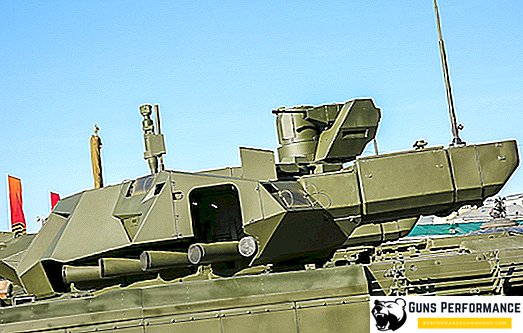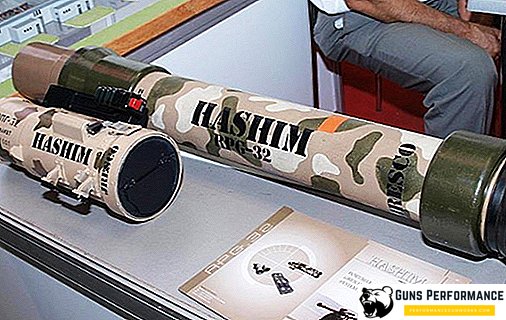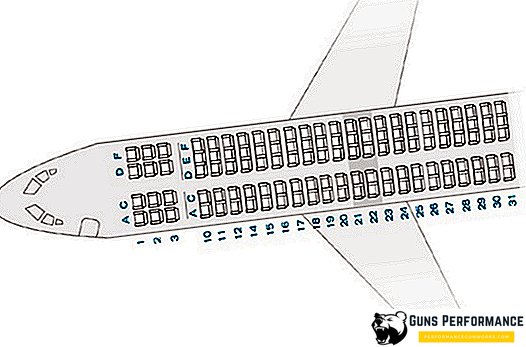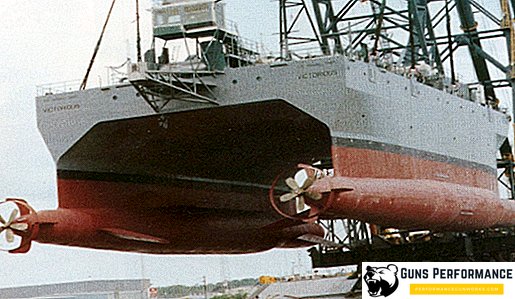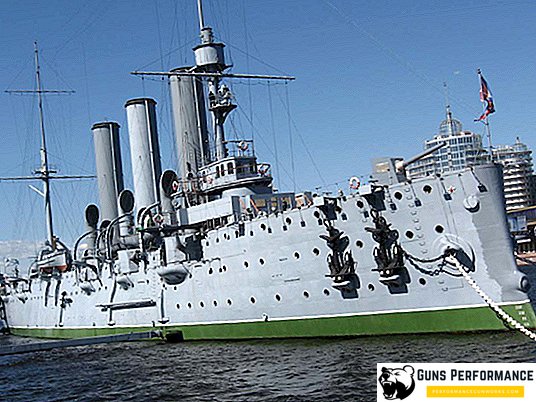
The century of ships is not long and their end is usually sad: the seabed or wall of a shipbuilding plant, where they are cut for scrap. However, there are a few exceptions - these are famous ships that, after the end of their service, become monuments or museums. You can count such cases on your fingers: Queen Mary and Missouri in the USA, Mikasa in Japan, Cutty Stark and Victoria in the UK. In Russia, there is also a legendary ship that changed the course of not only domestic, but also the whole world history. Of course, this is the famous cruiser "Aurora".
The majority of our compatriots cruiser "Aurora" is primarily associated with a single shot, which was the signal for the storming of the Winter Palace in October 1917. But this is not too fair: the cruiser was a participant in the most fateful events in the history of Russia of the last century. And the revolution is just one of them.
Aurora managed to survive in the hell of the Tsushima battle, escaped death during the First World War and was restored after being submerged in the Leningrad blockade. Fate clearly kept the cruiser. Today this ship is one of the most famous museums of St. Petersburg, every year it is visited by up to half a million tourists. Currently, the cruiser is on the next repair, the city authorities promise that the Aurora will return to its rightful place already on July 16.
Ship history
At the beginning of the last century, the Russian navy rapidly grew and was replenished with new pennants. In 1900, at the Admiralty shipyards in St. Petersburg, a new cruiser "Diana" was launched. In the Russian fleet, there has long been a tradition to call new ships the names of famous ships in the past, so the cruiser was called the Aurora in honor of the frigate that distinguished itself during the Crimean War.
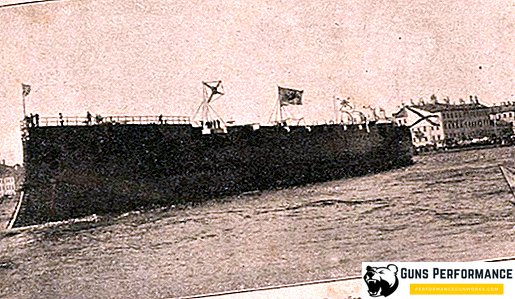
At the ceremony of launching the ship was attended by Russian Emperor Nicholas II.
"Aurora" refers to the first class cruisers or the so-called armored cruisers, in which the deck had armor protection from the outboard fire of enemy artillery. It cannot be said that the new ship was distinguished by outstanding fighting qualities: it could develop a course of 19 knots (the newest battleships of that time gave 18), its eight sixteen-inch guns also did not impress with their firepower. But he was quite capable of conducting reconnaissance, destroying enemy transport ships and protecting battleships from destroyers.
The geopolitical situation at the beginning of the last century was difficult. Russia was in a state of real cold war with Great Britain, Germany was rapidly gaining strength in Europe. In the Far East, a conflict with Japan was brewing.
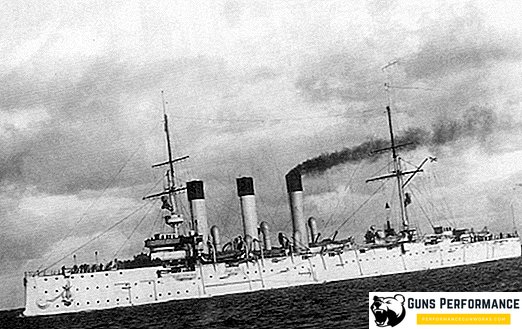
After the Japanese attacked Port Arthur, the Aurora fell within the 2nd Pacific Squadron, which, under the command of Admiral Rozhestvensky, was to leave St. Petersburg for the Far East in order to come to the aid of the besieged Russian fortress.

This idea initially looked like an adventure, in the end it led to the defeat at Tsushima - the worst defeat in the history of the Russian fleet. During the battle, "Aurora" carried out the order of the admiral - guarded transports. Eighteen enemy projectiles of various calibers got into the cruiser, the ship was seriously damaged, about a hundred people were wounded or killed. In battle, the cruiser commander was killed.
After the termination of the artillery duel, Russian warships were attacked by Japanese destroyers. It was they who caused the most serious damage to the Russian squadron. The cruisers were to guard their battleships, but instead they abandoned their main forces and headed for the Philippines, where they were disarmed and stood until the end of the war.
The order to flee from the battlefield was given by Rear Admiral Enquist, who commanded a squad of cruisers. After the ships returned home, the military leadership did not know what to do with the admiral: to reward him for saving the ships or to bring him to trial for cowardice and indecision. In the end, it just gave up.
"Aurora" returned to St. Petersburg in 1906, after which the ship embarked on repairs, in 1915, the cruiser was upgraded and acquired a familiar appearance to us. The artillery of the cruiser was strengthened, the number of guns of the main caliber was brought to fourteen.
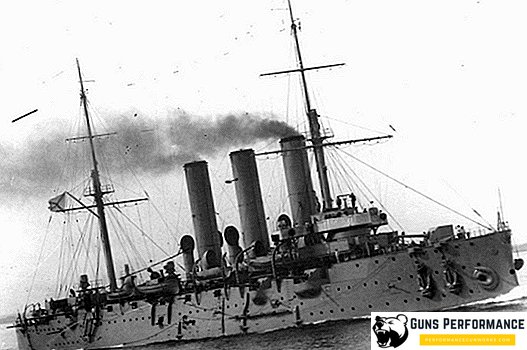
During the First World War, the Aurora operated in the Baltic, the ship was part of the second cruiser brigade. They chased after German cruisers, destroyed enemy minesweepers and minelayers, and conducted patrol service in the Gulf of Finland.
Already in 1914, in the Baltic, the Germans began to use new weapons for that time - submarines. In October of the same year, the German U-26 submarine collided with two Russian cruisers: the new Pallada (the old one died near Port Arthur) and the Aurora. The submarine captain chose a more modern Pallada as a target for the attack. From hitting the torpedo detonated the ship’s ammunition, the cruiser went under water in seconds. Saved was not. "Aurora" managed to hide in the skerries. So, thanks to chance, the ship escaped death a second time.
The revolutionary events of 1917 are well known to all, hundreds of books and articles have been written about this. It can be noted that the threat to open fire on the Winter Palace was a blatant bluff - the ship was at the next repair, and the ammunition load from it was unloaded.
After the revolution, the Aurora turned into a training ship: he made several trips, participated in maneuvers. In 1933, the cruiser was turned into a non-self-propelled floating training base.
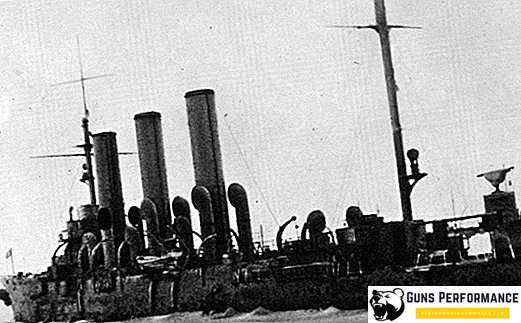
During the Great Patriotic War, guns of the main caliber were removed from the cruiser, they defended the approaches to the city. The Germans bombed and bombarded the ships of the Baltic Fleet many times, but they were not too interested in the veteran-deprived cruiser. Despite this, the Aurora received a portion of enemy shells that were due to her. On September 30, 1941, as a result of an artillery bombardment, the ship was seriously damaged and sat on the ground.
After lifting the siege from the city, the Aurora was reanimated. She picked up and sent to the next repair. It was decided to make a ship-museum from Aurora. All the boilers, mechanisms and propellers were removed from the cruiser, the artillery which was on it in 1915 was installed. In the postwar years, "Aurora" has become a symbol of revolution, a kind of fetish for the entire population of a huge country.
The image of this ship could be found everywhere, on postcards, stamps, coins. His role in the revolutionary events in every way extolled. The silhouette of the cruiser became the same symbol of St. Petersburg as St. Isaac's Cathedral and the Bronze Horseman. Books were written about Aurora, songs were composed, films were shot.
The last major overhaul of the cruiser was made in the mid-80s. Its cause was the strong deterioration of the hull, in many places it simply rotted. In the holds constantly worked pumps, scooped every day a few dozen tons of water. It became clear that without a major overhaul, the ship would simply sink.
It is with this repair are rumors that the current "Aurora" is not real.
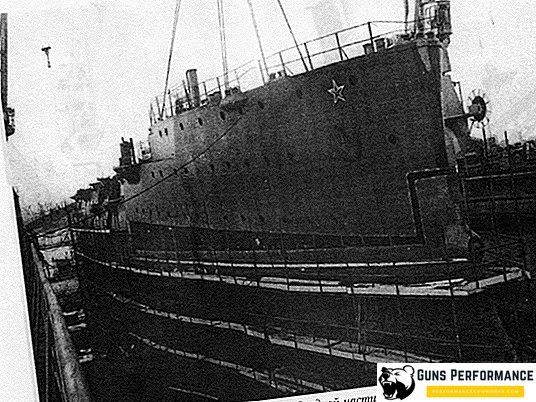
Works were carried out at the Northern shipyard. The workers had to cut off the entire underwater part of the cruiser and replace it with a new one. The surface part of the vessel was subjected to no less serious alteration. Was carried out and the reconstruction of the interior, which tried to give the original appearance. Some units and vehicles of the ship were replaced by models.
There are different evaluations of the work done, but many historians believe that in 1987 a “replica” returned to the place where the ship was stationary. Too little in the current cruiser "Aurora" left from the ship, which descended from stocks in 1900.
The submarine part of the cruiser after the repair was not cut for scrap metal, but was towed to the village of Ruch'i (near St. Petersburg) and flooded there.

In 2010, the Aurora was removed from the Russian Navy and transferred to the Central Naval Museum. In 2013, Shoigu said that the cruiser is waiting for another repair, during which it will be equipped with a diesel-electric installation. That is, the ship will again be running.
In the newest Russian history, the Aurora cruiser has been repeatedly mentioned in connection with a number of loud scandals that have received wide response in society. The fact is that representatives of the urban elite (including the governor of St. Petersburg) have chosen the museum ship to celebrate corporate events and other VIP parties.
In 2014, the scheduled repairs began, which should end this year. So, at least, promised the authorities of St. Petersburg. The return of "Aurora" is scheduled for July 16. However, there is every reason to believe that when the cruiser returns to its place, it will still less resemble that ship, the launch of which was blessed by the Russian emperor himself.
Description
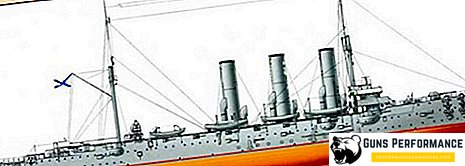
"Aurora" refers to the class of cruisers I rank. Its total displacement is 6731.3 tons, the maximum speed - 19.2 knots. The ship could go economical course (10 knots) distance of 4 thousand nautical miles.
The main power plant of the vessel consisted of three vertical triple-expansion steam engines and 24 steam boilers. Its total capacity was 11610 liters. with.
The ship moved by rotating three screws.
The maximum coal supply that the cruiser could take on board was 1 thousand tons.
The crew of the cruiser - 570 people, including 20 officers.
In 1903, the Aurora had the following artillery weapons: eight 152-mm cannons of the main cannon caliber, twenty-four 75-mm cannons, eight 37-mm cannons of the Hotchkiss system and two 63.5-mm amphibious assault guns of Baranovsky.
Torpedo armament was represented by one surface and two underwater torpedo tubes. The mine weapons consisted of 35 min. 254 mm caliber. Since 1915, the cruiser was armed with 150 mines of the type "1908".
The cruiser deck had a reservation of 38-63.5 mm, and a conning tower - 152 mm.



